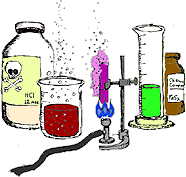
Be An Inventor
at the Inventor's Club
Lesson 5

|
|
Be An Inventor at the Inventor's Club Lesson 5
|
|
In this activity, children will discuss how machines help
people do things. Then they will "invent" machines that can help them
do something they need help doing.
Duration:
5 days
Objectives:
Students will actively explore the Internet as a valuable resource and tool for acquiring
information about the world.
Students will gain research based knowledge of how inventions effect our daily lives.
Students will explore how science and technology influence every aspect of our lives.
Students will develop and utilize critical thinking skills.
Materials:
Key Vocabulary:
machines, wacky, contraption, convention
Procedures:
Assessment:
| Level | PERFORMANCE DESCRIPTION |
|---|---|
| The proposed invention provides a unique solution to the situation. The proposed invention reflects a high level of creativity. | |
| The stated purpose provides a good answer to the identified situation or need. | |
| The proposed invention will not provide a complete remedy for the situation. | |
| The proposed invention has a little or no relation to the unmet need or situation described. |
Home Learning:
Using the Inventor's Coloring Book on the National Geographic Site, have students create their own Wacky inventions by printing, cutting, pasting and coloring. Students will print and mail in the form along with their invention.
Extension Activity:
Set up a classroom invention
company. Invite children from other classes to submit difficult tasks that
they would like machines to help them do. Then have the children in your
class invent machines (draw pictures of machines) that can do the jobs.
Have an inventor's convention.
Children can dress in lab coats (or smocks), display the pictures of their
inventions on tables around the room, and visit each other's exhibits.
Allow students to go online to play Wild and Wacky Inventions Games.